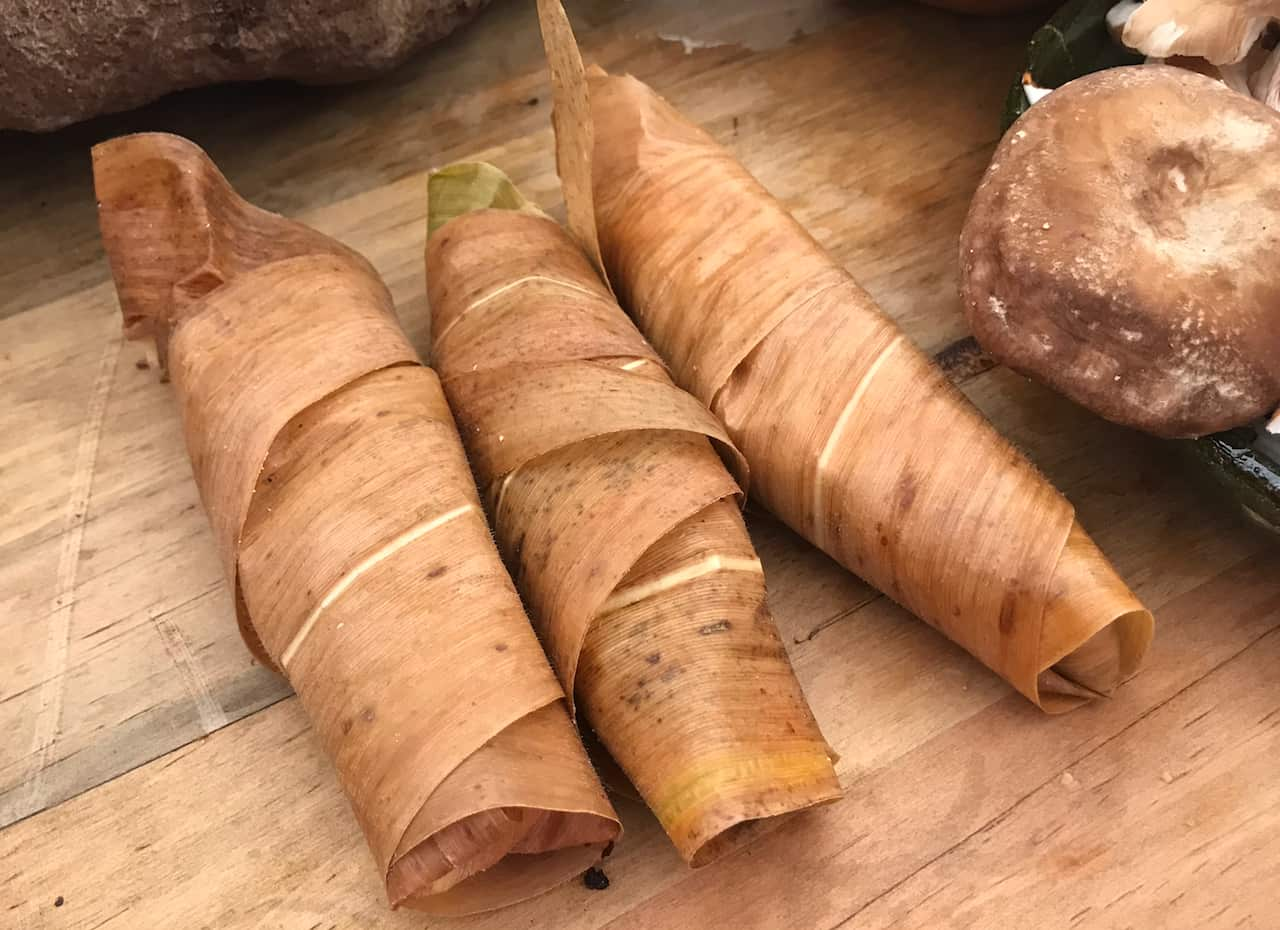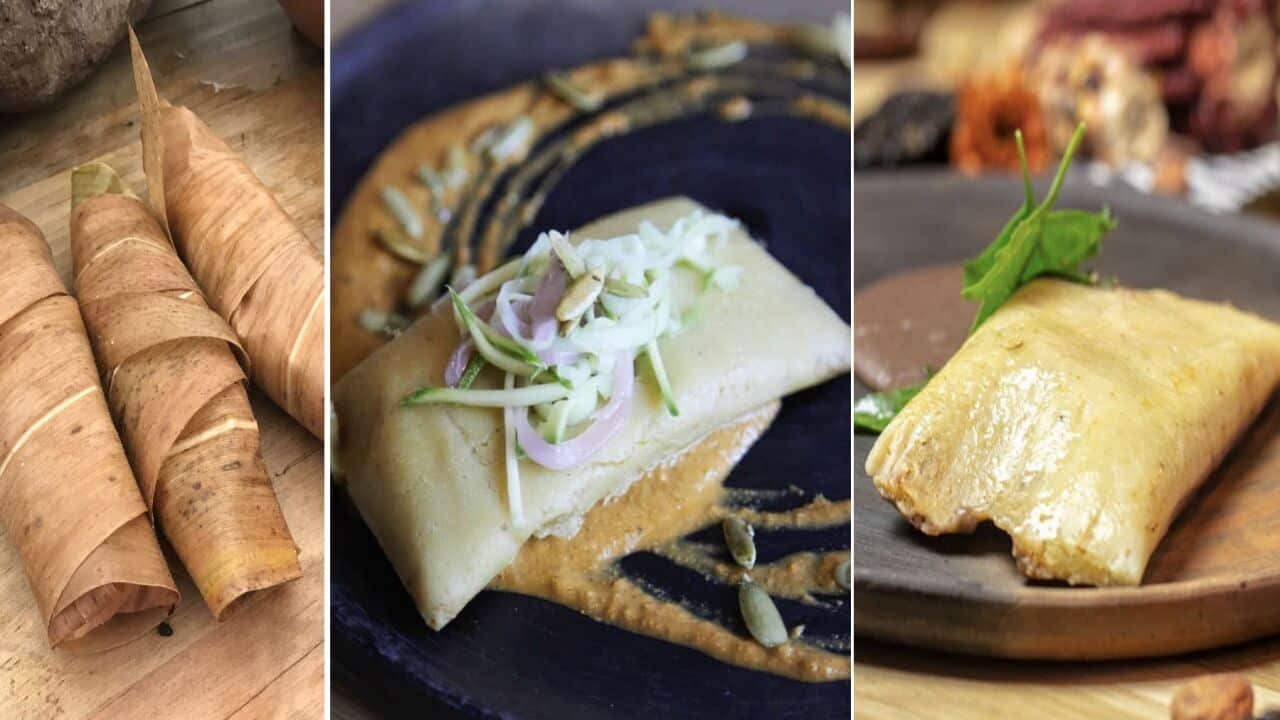SBS Spanish speaks to Rafael Mier, the director of Fundacion Tortilla - an organisation set up in Mexico to promote corn and tortillas internationally - about the history of tamales, the different styles of preparation, why they’re popular, and how they’re incorporated in modern fiestas and celebrations.

Mexico City tamales Source: Fundación Tortilla
Tamales in pre-Hispanic America
Tamales are a dish with a history that dates back to American pre-Hispanic times.
Mr Mier says there is evidence that tamales were eaten in Mesoamerica as early as 8000 to 5000 BC, and the dish is also depicted in wall paintings in Guatemala.
The ancient Mayans and Aztecs consumed processed corn tamales and also offered them to gods or divinities during ceremonies.
In Tenochtitlan, today’s Mexico City, special ceremonies were held to bless the seeds and to pray for good harvests.
“In these traditional celebrations of the Aztecs, tamales were presented as an offering,” Mr Mier says.

Tamales from Oaxaca, Mexico Source: Fundación Tortilla
The arrival of the Spaniards: Fusion of cultures and traditions
With the arrival of the Spaniards in Mexico, there was a fusion between the American pre-Hispanic celebrations and Christian traditions.
The Spaniards had a tradition which consisted of presenting newborn children in the temple 40 days after birth.
It was a blessing that involved the lighting of candles, which is why this celebration is called Candlemas Day.
Candles at the event symbolised light for the life of the child who had been born.
The tradition of taking the newborn to the church was acquired by Christians in Mexico.
During Christmas, Christians celebrate the birth of Jesus Christ, and forty days later, on February 2, they celebrate the Candlemas Day.
During the period after the Spaniards arrived, American pre-hispanic and Catholic traditions were fused, and ever since then, tamales are offered during the Candlemas Day in Mexico.

Tamale from Mexico City Source: Fundación Tortilla
Importance of tamales in today's Mexico
The most emblematic Mexican dishes made with corn are tortillas and tamales.
Tortillas are a type of flatbread typically made from corn or wheat. They are considered to be a primary source of protein and carbohydrates in the country and are consumed as part of everyday life.
Tamales, on the other hand, are usually made and offered during celebrations such as weddings, births and even funerals.
According to Mr Mier, in Mexico, it is very common to offer tamales when a person dies.
“The relatives make the prayers for the deceased and provide tamales as an appreciation to the people who accompany them in the funeral,” he said.
It is important to note that tamales, for the most part, are eaten during celebrations that involve a large number of people.
People who prepare tamales in Mexico usually do so for 40 or 50 people.
“The tamales involve a relationship with the community, it can be with family or friends."

Tamales from Mexico City Source: Fundación Tortilla
Iconic tamales in Mexico
In Mexico City, tamales are usually wrapped in corn leaves and are known as totomoxtle.
For its elaboration, fresh corn flour or corn dough is used, which is also used to make tortillas.
When flour is used, the corn is nixtamalised. The nixtamalisation is a process that consists of cooking the corn with ash or lime before it's put to the side to rest. The day after nixtamalisation, the cooked corn is stirred, and flour is obtained.
The day after nixtamalisation, the cooked corn is stirred, and flour is obtained.

Tamales from Oaxaca, Mexico Source: Fundación Tortilla
The wet flour is mixed with lard to give the tamales softness. They are then filled with different stews, including mole with turkey, mole with chicken, chicken or pork with green sauce, bean, and slices of cheese. Raisins can also be added for sweetness.
In Mexico, there is a wide variety of tamales. Each state has its own version according to the food produced in the region.
Oaxaca tamales: These tamales are named after the state in which they are popular and usually incorporate banana leaves. However, people in the state are also known to prepare tamales using corn leaves. Xochimilco tamales, Mexico City: The Xochimilco tamales are varied. Some are prepared with mole, turkey and green sauce.
Xochimilco tamales, Mexico City: The Xochimilco tamales are varied. Some are prepared with mole, turkey and green sauce.

Oaxacan tamales Source: Fundación Tortilla
Another common tamale from the city is prepared with rabbit meat with chipotle chilies, while a popular mixture is beans accompanied with cheese and mole. Sweetness is added to these recipes using cranberries.
Tlaxcala tamales: In Tlaxcala, there are four main types of corn that are used: black or blue, white, yellow and pinto. In Tlaxcala, a common mixture in tamales includes lemon and nuts, while they also have tejocote tamales prepared with yellow corn.
There is another tamale from this region using and peaches, made with yellow corn.
